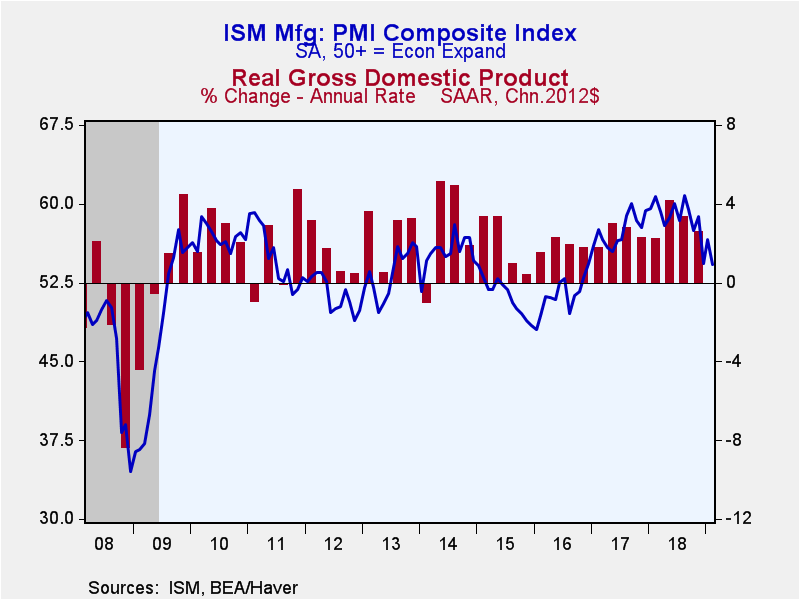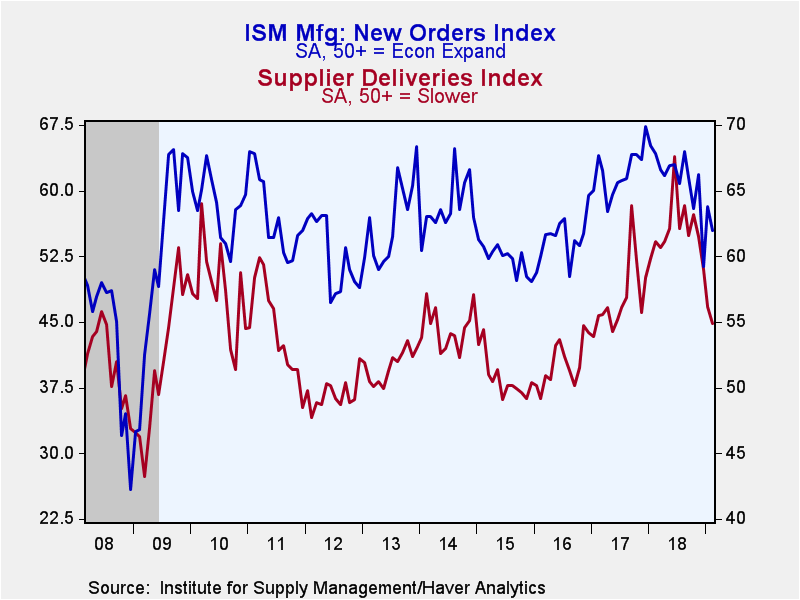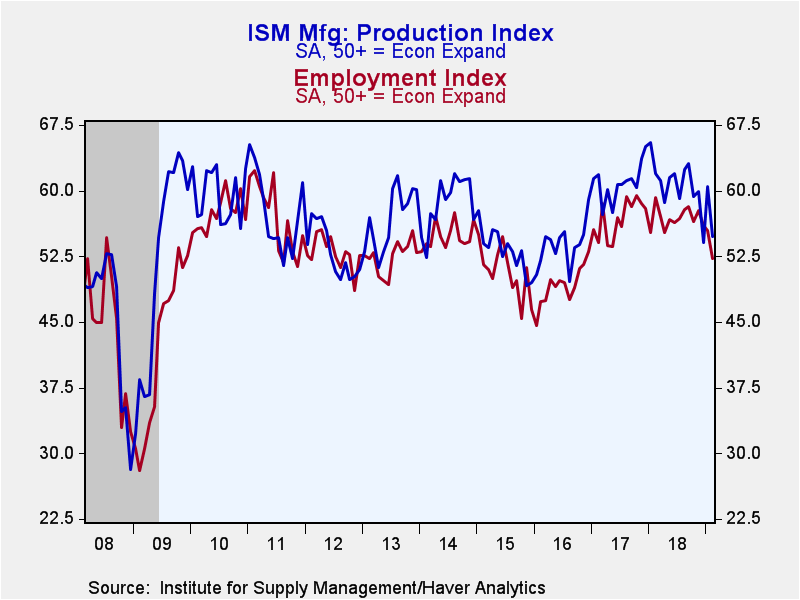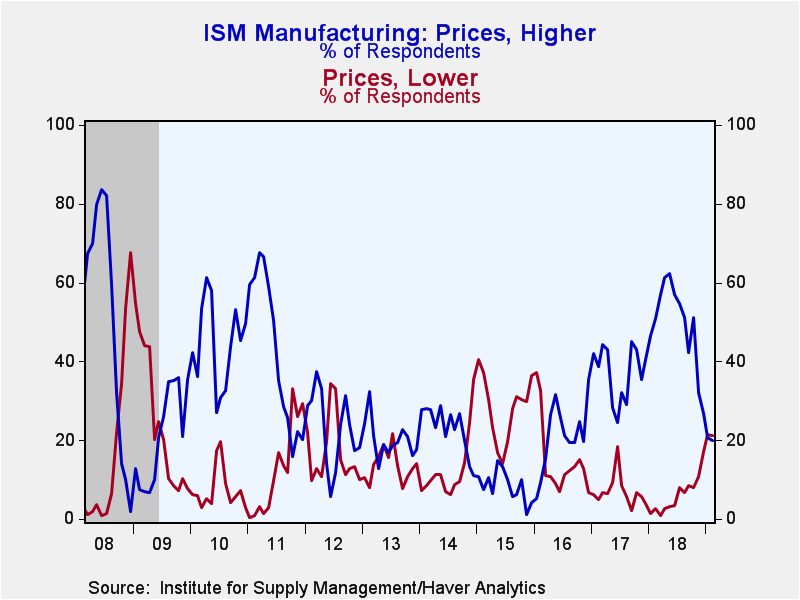 Global| Mar 01 2019
Global| Mar 01 2019ISM Manufacturing Index Declines to Two-Year Low in February
Summary
The ISM manufacturing index unexpectedly declined to 54.2 in February, the weakest reading since November 2016. The Action Economics Forecast Survey anticipated an increase to 56.0. Over the past ten years, there has been a 62% [...]
The ISM manufacturing index unexpectedly declined to 54.2 in February, the weakest reading since November 2016. The Action Economics Forecast Survey anticipated an increase to 56.0. Over the past ten years, there has been a 62% correlation between the index level and quarter-to-quarter growth in real GDP. According to the ISM press release, the January reading is consistent with real GDP growth of around 3.3%.
Four out of five of the subcomponents of the headline index declined. The exception was inventories, which increased to 53.4 from 52.8. The new orders index decreased to 55.5 from 58.2, production fell to 54.8, and supplier deliveries continued its slide to 54.9. The employment measure dropped to 52.3, a two-year low. Of note, the new export order index rose 1.0 point to 52.8, perhaps reflecting some easing in trade tensions. All of these levels are consistent with continued, but slower growth in manufacturing activity and hiring.
Despite a rebound in commodity prices, the prices paid index – which is not seasonally adjusted – edged down to 49.4 in February, the lowest reading in three years. Only 20.0% of respondents reported paying higher prices, the smallest percentage since November 2016.
The ISM figures are diffusion indexes where a reading above 50 indicates expansion. The figures from the Institute for Supply Management can be found in Haver's USECON database; further detail is found in the SURVEYS database. Commodity prices can be found in USECON as well as the CMDTY database. The expectations number is available in Haver's AS1REPNA database.
| ISM Mfg (SA) | Feb | Jan | Dec | Feb'18 | 2018 | 2017 | 2016 |
|---|---|---|---|---|---|---|---|
| Headline Index | 54.2 | 56.6 | 54.3 | 60.7 | 58.8 | 57.4 | 51.3 |
| New Orders | 55.5 | 58.2 | 51.3 | 64.3 | 61.5 | 62.2 | 54.5 |
| Production | 54.8 | 60.5 | 54.1 | 62.0 | 60.7 | 60.9 | 53.8 |
| Employment | 52.3 | 55.5 | 56.0 | 59.2 | 56.9 | 56.8 | 49.1 |
| Supplier Deliveries | 54.9 | 56.2 | 59.0 | 61.1 | 62.0 | 56.8 | 51.8 |
| Inventories | 53.4 | 52.8 | 51.2 | 56.7 | 52.9 | 50.4 | 47.5 |
| Prices Paid Index (NSA) | 49.4 | 49.6 | 54.9 | 74.2 | 71.7 | 65.0 | 53.1 |
Gerald D. Cohen
AuthorMore in Author Profile »Gerald Cohen provides strategic vision and leadership of the translational economic research and policy initiatives at the Kenan Institute of Private Enterprise.
He has worked in both the public and private sectors focusing on the intersection between financial markets and economic fundamentals. He was a Senior Economist at Haver Analytics from January 2019 to February 2021. During the Obama Administration Gerald was Deputy Assistant Secretary for Macroeconomic Analysis at the U.S. Department of Treasury where he helped formulate and evaluate the impact of policy proposals on the U.S. economy. Prior to Treasury, he co-managed a global macro fund at Ziff Brothers Investments.
Gerald holds a bachelor’s of science from the Massachusetts Institute of Technology and a Ph.D. in Economics from Harvard University and is a contributing author to 30-Second Money as well as a co-author of Political Cycles and the Macroeconomy.









